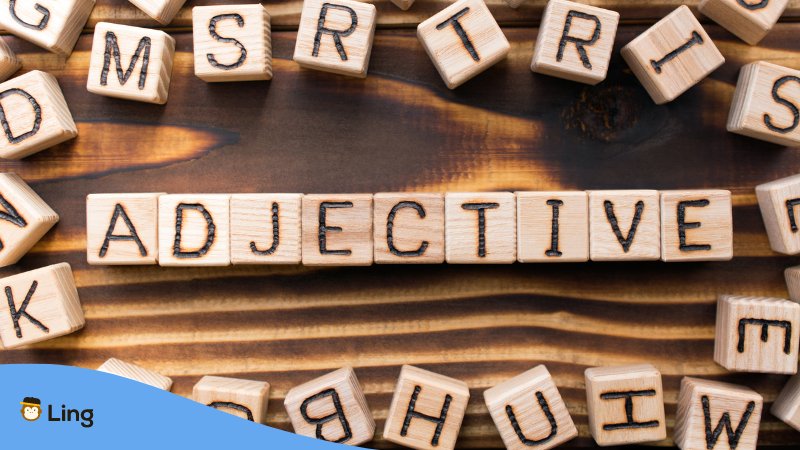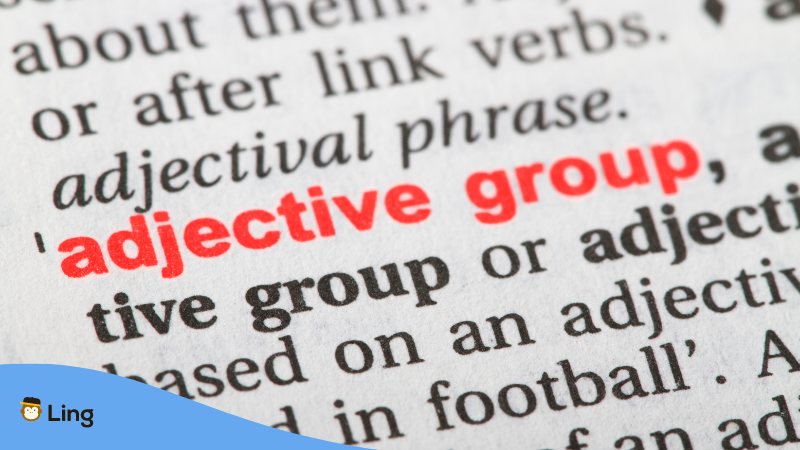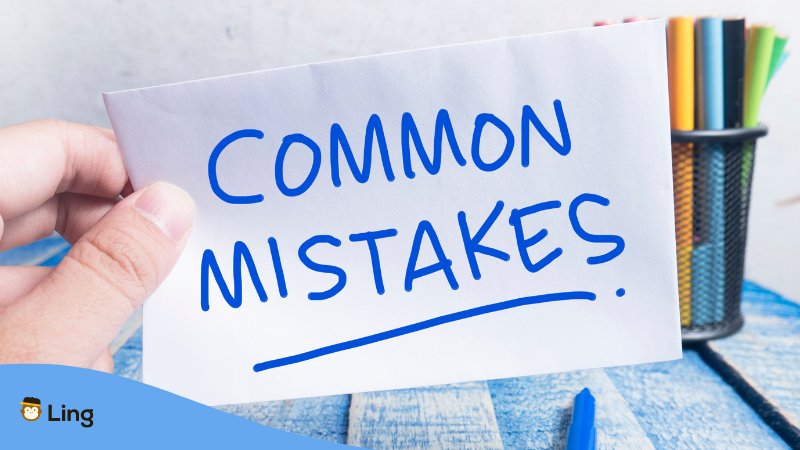Have you ever found yourself needing help to express your thoughts accurately in Malay? You may have mastered the basics, but maybe you’re unsure how to add some descriptive flair to your sentences. Well, my friend, this is your lucky day!
In this complete guide, we’ll dive into the descriptive world of Malay adjectives – from grammar rules to formation and usage. Sounds good? Nice! Let’s get to it!
Importance Of Knowing Malay Adjectives
First thing first – importance. Adjectives are like seasoning in a language. They add flavor to your sentences; without them, your sentences would be bland and uninteresting.
Malay adjectives are no exception. They are crucial for describing people, places, and things in an accurate and exciting way.
Let me give you an example. Imagine you’re trying to describe your favorite food to a friend. You could say, “I like food,” which would be true.
But it doesn’t really give your friend any information about what kind of food you like.
Now, let’s add some Malay adjectives to the mix. “Saya suka makanan yang sedap dan pedas” (I like food that is tasty and spicy).
It makes sense, right? With just a few adjectives, you’ve given your friend a much better idea of what you enjoy eating.
Types Of Malay Adjectives
Alright, let’s talk about the different types of Malay adjectives. There are five main types of adjectives in Malay, and each one serves a unique purpose.
Descriptive Adjectives
First up, we have descriptive adjectives. These are the adjectives that describe the qualities of a person, place, or thing.
For example, “besar” (big), “cantik” (pretty), “tinggi” (tall), “merah” (red), and “sabar” (patient) are all descriptive adjectives in Malay.
They help paint a picture in your mind of what you’re trying to describe.
Quantitative Adjectives
Next, we’ve got quantitative adjectives. These ones tell you how much or how many of something there is.
Like “satu” (one), “dua” (two), and “ramai” (many). They give you an amount or number.
Demonstrative Adjectives
Then there are demonstrative adjectives. These adjectives are used to indicate which person, place, or thing you’re referring to.
Examples include “ini” (this), “itu” (that), “sana” (over there), and “sini” (here). They help clarify the subject of your sentence.
Possessive Adjectives
Possessive adjectives show ownership or possession. They come before the noun and agree with the gender of the owner.
Like “saya” (my), “kamu” (your), and “mereka” (their). So, “buku saya” means “my book.”
Interrogative Adjectives
Last but not least, we’ve got interrogative adjectives. These help you ask questions about a person, place, or thing.
Examples are “apa” (what), “siapa” (who), and “mana” (where). They’re perfect for gathering information.

How To Modify Malay Adjectives
Now, let’s look into how to modify Adjectives in Malay.
Using Prefixes
So, when Malay people want to turn a noun into an adjective, they add a little something called a prefix. It’s like giving the word a magical makeover!
Take “kecil,” for example, which means “small.” If you add the prefix “ter-” to it, you get “terkecil,” which means “smallest.”
That’s like taking something tiny and making it even tinier! Another word, “pandai,” means “skillful.”
But, if you add the prefix “ter-” to it, you get “terpandai,” which means “most skillful.” That’s like saying, “Wow, this person is a master at what they do!”
Adding A Suffix
Another way to form adjectives in Malay is by adding a suffix to a noun. This also gives it a new meaning!
For example, the noun “keras” means “hard,” but by adding the suffix “-nya” to it, we get “kerasnya,” which means “hardness” or “how hard something is.”
Another example is “pandai,” which means “skillful.” If you add the suffix “-nya” to it, you get “pandainya,” which means “her skillfulness.” It’s like adding a little extra flair to a sentence!
Using Reduplication
Lastly, Malays can make adjectives by repeating a word. It’s like saying “same same but different” in English!
For instance, “muda” means “young.” But, if you repeat it as “muda-muda,” you get “very young” or “super young.” It’s like emphasizing how youthful something or someone is.
Another example, “manis,” means “sweet.” But, if you repeat it as “manis-manis,” you get “very sweet” or “super sweet.” That’s like saying, “This dessert is so sweet. It’s like a sugar overload!”
Placement Of Malay Adjective
At this point, you might be wondering where these little descriptive words go when you’re speaking or writing in Malay. Well, let me break it down for you.
Before The Noun
One common way to use Malay adjectives is to place them before the noun they describe. This is similar to how we use adjectives in English.
For example, “rumah besar” means “big house.” In this case, “besar” comes after “rumah” to indicate that the house is big.
After The Noun
Another way to use Malay adjectives is to place them after the noun. This is known as a postposition.
For example, “orang kaya” means “rich person.” In this case, “kaya” comes after “orang” to indicate that the person is wealthy.
Emphasis And Poetic Effect
Sometimes, Malay adjectives are placed in a way that emphasizes or creates a poetic effect. This can include repetition or a change in word order.
For example, “pakaian cantik-cantik” means “very pretty clothes.” The repetition of “cantik” emphasizes how pretty the clothes are.
In some cases, the adjective can be placed at the beginning of the sentence for poetic effect.
For example, “Indah sungguh pemandangan di sini” means “Truly beautiful is the scenery here.” In this case, “indah” is placed at the beginning of the sentence to create a poetic effect.

Agreement Between Malay Adjectives And Nouns
Now let’s talk about something cool. This is all about how adjectives match nouns regarding number and gender. It’s important to get this right if you want to speak fluent Malay.
Number Agreement
This means the adjective changes based on whether the noun is singular or plural.
So, if you’re describing one thing, you’ll use one form of the adjective. If you’re describing multiple items, you’ll use a different form.
For example, “buku hijau” means “green book” for one book, but if you’re describing two or more green books, you would say “buku-buku hijau.”
Gender Agreement
Pay attention now because this is important. In Malay, there are no specific gendered pronouns. Still, sometimes nouns have inherent gender, and adjectives will need to agree with that.
For example, if you’re describing a male doctor, you would use “doktor lelaki” (lelaki means male). If describing a female doctor, use “doktor perempuan” (perempuan means female).
Now, remember this — Not all nouns have inherent gender, so in those cases, you don’t need to worry about gender agreement.
For example, the object “meja besar” (big table) doesn’t have a specific gender, so the adjective “besar” doesn’t need to agree with any gender. Got it? Good! You’re learning fast!
Differences Between Malay Adjectives And Adverbs
Adverbs are words that illustrate Malay verbs, adjectives, or other adverbs. They’re like the sidekicks of the sentence, adding more detail and description.
For example, “Dia menyanyi dengan baik” (She sings well) – “baik” is the adverb describing how she sings.
Now, how are adverbs different from adjectives? Well, adjectives describe nouns, while adverbs describe verbs.
So, while “rumah besar” (big house) uses an adjective, “berlari cepat” (run quickly) uses an adverb.
Differences Between Malay Adjectives And Verbs
Speaking of verbs, let’s move on to the differences between Malay adjectives and verbs. Verbs are action words, like “makan” (eat) or “tidur” (sleep).
They show what the subject is doing in the sentence. But sometimes, adjectives and verbs can look similar in Malay.
For example, “muda” can mean “young” as an adjective, but it can also mean “become young” as a verb.
So, how can you tell the difference between an adjective and a verb? Well, one way is to look at the context of the sentence.
If the word describes a noun or pronoun, it’s probably an adjective. But if it’s describing an action, it’s probably a verb.

Common Grammar Rules Mistakes When Using Adjectives In Malay
So, when it comes to learning Malay adjectives, people can make a few common mistakes. One of them is getting the word order wrong.
Usually, as we talked about above, adjectives come before the noun they’re describing, like “rumah besar” (big house) or “makanan enak” (yummy food).
But, sometimes people might put the adjective after the noun, like “rumah yang besar” (house that is big) or “makanan yang enak” (food that is yummy). It’s not the end of the world, but it’s not how Malays usually do it.
Another pitfall in Malay grammar is using the wrong form of the adjective. In Malay, adjectives don’t change, so there’s no need to worry about gender, number, or case.
But some adjectives can have different forms depending on how polite you want to be.
For example, “besar” (big) can be made more polite by adding “yang,” resulting in “yang besar” (the big one).
Lastly, the word order can be slightly different when describing people with adjectives.
Instead of “the happy man,” in Malay, it would be “lelaki yang bahagia” (man that is happy).
Don’t stress too much about these mistakes, though! With some practice and patience, you can master the proper use of adjectives in Malay. Just keep at it. Practice makes perfect, remember?
Commonly Used Malay Adjectives
Looking for the right adjective to describe something can be tricky, especially in a foreign language like Malay.
To make it easier for you, we’ve put together a list of commonly used Malay adjectives with their English translations and pronunciations. Here are some of them:
| Big | Besar | Beh-sar | |
| Small | Kecil | Kuh-cheel | |
| Beautiful | Cantik | Chan-tik | |
| Ugly | Hodoh | Ho-doh | |
| Good | Baik | Ba-ek | |
| Bad | Buruk | Boo-rook | |
| Expensive | Mahal | Ma-hal | |
| Cheap | Murah | Moo-rah | |
| Delicious | Sedap | Seh-dap | |
| Spicy | Pedas | Pe-das | |
| Cold | Sejuk | Se-jook | |
| Hot | Panas | Pa-nas | |
| Fast | Cepat | Che-pat | |
| Slow | Lambat | Lam-bat | |
| Young | Muda | Moo-dah |
So, whether you’re a beginner or an advanced learner, having a list of go-to adjectives to use in your conversations and writing is always helpful.
Keep practicing and incorporating these adjectives into your Malay vocabulary, and you’ll be on your way to becoming a fluent speaker in no time. Happy learning!

Learn The Malay Adjectives With Ling
Now that you’ve grasped Malay adjectives, the next step is to practice using them in your everyday conversations and writing.
Don’t be afraid to experiment with different adjectives and formations to make your sentences pop.
Remember, adjectives are like seasoning in a language, so use them wisely to add flavor and interest to the structure of your sentences.
And if you want a fun and engaging way to improve your language abilities, check out the Ling app! With its game-like and interactive language learning approach, you’ll speak Malay like a local.
Download the app now from the App Store or Google Play today!



































































